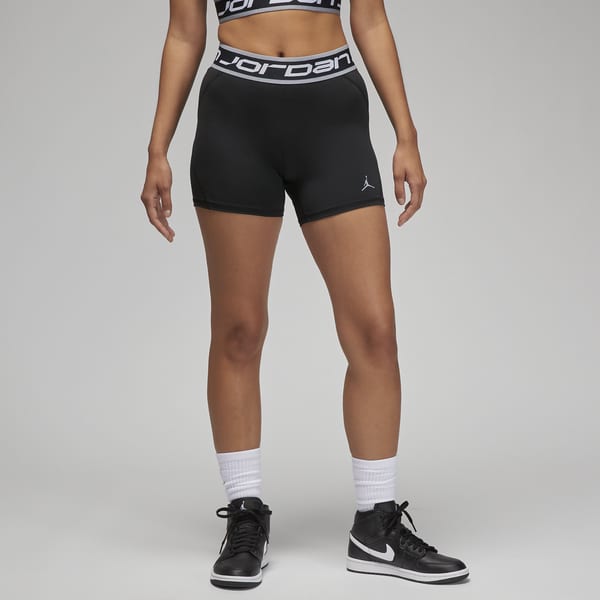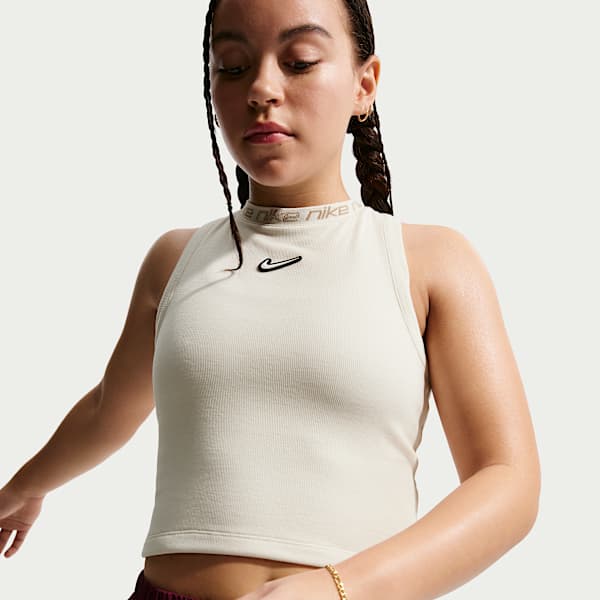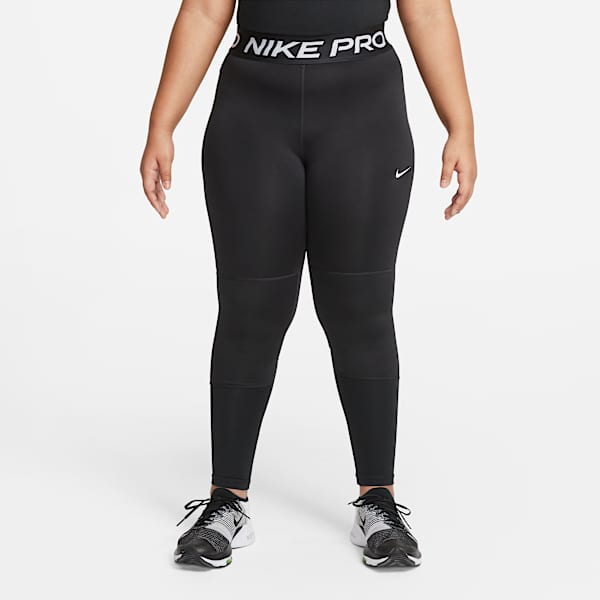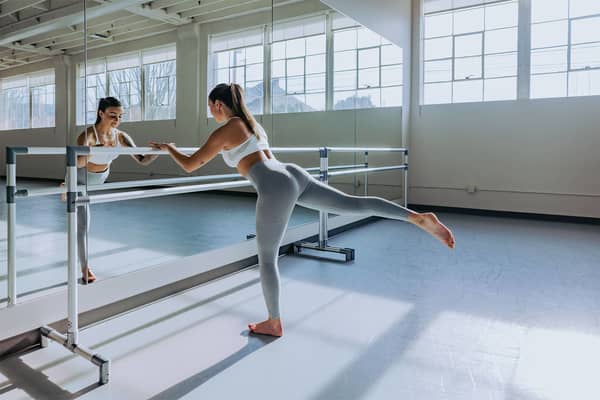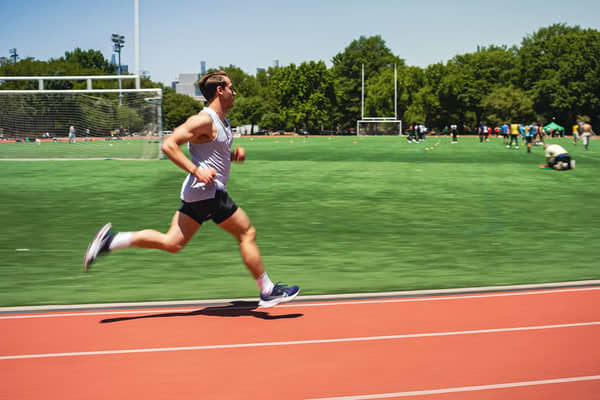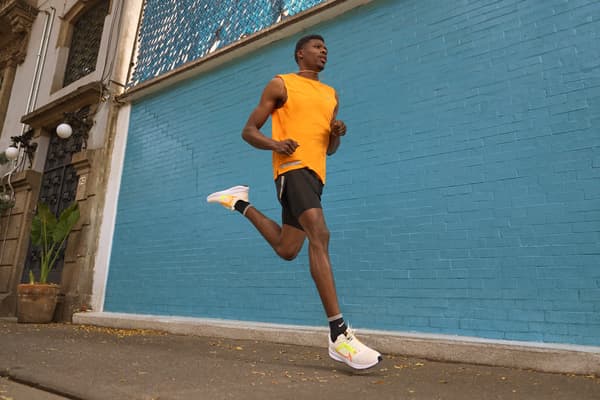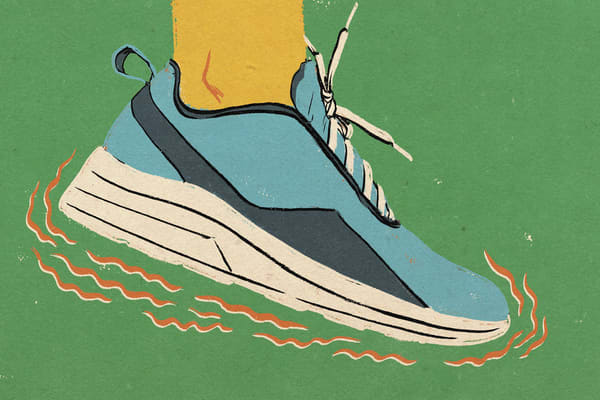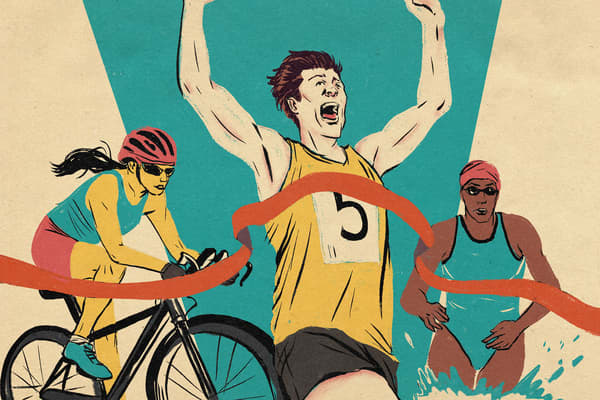How to Do a Plié, According to Experts
Sport & Activity
Master this foundational dance move.

On a basic level, anyone can dance. However, if you want to master a more traditional form of dance like ballet, it's essential to learn the basics. That includes learning how to do a plié, a fundamental move that is often taught early in ballet lessons.
Pliés are often used in ballet classes and performances, along with dance cardio classes. Kendall Nielson, an AFAA-certified dance instructor and owner of a dance studio in Garden City, Idaho, said she'll often use plié squats in her workouts for clients.
"I like to keep the balance of intensity and complexity there", she said.
(Related: What Are the Benefits of Dancing?)
Pliés require some technical skill, and it's important to get the form right if you plan to do more structured dance, said Mahri Relin, MS, NASM CPT
Here's a bit of background on the plié, some common mistakes to avoid and tips on how to master the dance move.
What Is a Plié?
A plié is a bend at the knees, with your knees remaining aligned over the middle of your feet, Relin said. It's used in ballet for jumps and turns to help give you spring and absorb shock. Pliés are used in all five basic foot positions in ballet.
There are two basic forms of plié, according to Relin:
- Demi Plié: This is where you only bend down far enough to keep your heels on the ground, evenly distributing your weight between your heels and the balls of your feet.
- Grand Plié: With a grand plié, you do a deeper bend than a demi plié, where you lift off your heels, shifting weight onto the balls of your feet. Your thighs open into a horizontal position.
"Pliés can be done in isolation, or they can be connected to other movements", Relin said.
What Is the Role of a Plié in Dance?
A plié is "fundamental" to dance, Relin said, adding that pliés "comprise the building blocks for creating a dancer's movement vocabulary to learn how to hold their muscles and align their bodies properly".
"Pliés are also needed to execute leaps, turns and preparations for movements, and they are essential to landing from jumps with proper shock absorption", she said.
Proper plié form is crucial, both to dance correctly and lower the risk of getting hurt. Without proper plié form, injuries are more likely due to misalignment or restrictions in the way you bend through your legs, Relin said.
Common Plié Mistakes
Proper plié form is important—otherwise, you risk overloading the knee joint. Relin said these are common mistakes she sees:
- Knee misalignment. When doing a plié, "your knees need to track over your toes", Relin said. Meaning, your knees should follow the same line as your feet when you bend.
- Not bending properly. It's important to flex or bend properly through your hips, knees and feet.
- Incorrect posture. "Depending on the form of dance you are doing, you might need to make sure that your upper body is lifted and you are not hinging at the hips", Relin said. But she included this caveat: there are a lot of forms of dance, and some break the "rules" on occasion. When learning this move for the first time, though, it's recommended to maintain a neutral spine and think of bending your knees in line with your toes to avoid injury.
- Leaning forwards. "We want people to be upright", Nielsen said. "Don't lean forwards. The weight is centred."
How to Work Up to a Plié
Relin recommended warming up and stretching first.
"Start by pedalling through your feet while holding on to a chair or barre", she said. "Swing and bend your legs freely, and roll up and down your spine to warm up your joints throughout your whole body".
(Related: What Is Barre—and What Should You Wear to Do It?)
You may also want to consider doing calf stretches from a lunge position if you tend to have tight ankles and calves, Relin said. "You might also stretch your thighs by lifting your heels to your seat on each side", she said.
But you don't need to get too in depth with your warm-up.
"Pliés are some of the earliest movements in a ballet class, so you will probably find that they can also serve as warm-ups for more complex movements as long as you are not jumping into deeper grand pliés straight away", Relin said.
Her advice: start with more gentle demi pliés and work your way to grand pliés.
Bear in mind, too, that if you have restrictions in your Achilles, calf muscles, knees or hips, you may have trouble doing a plié correctly. You can start from standing and slowly bend into a demi plié to see how it feels, stopping if you feel any discomfort or pain.
How to Do a Plié
For a traditional ballet demi plié, Relin said:
- Begin with your heels together and feet pointed 45 degrees out in each direction. This is known as first position.
- Start to bend your knees and make sure they stay aligned over the middle of your feet.
- As you bend, keep your upper body lifted and your spine straight.
"I like to imagine an imaginary force spiralling around and behind your legs as you bend your knees", Relin said. "This force helps keep your knees turned out and your pelvis upright". You should only bend your knees enough to keep your heels on the ground.
Nielsen recommended thinking of keeping your weight in your heels. "It helps people centre their gravity", she said.
A grand plié starts out like a demi plié, but takes things a step further.
"Make sure you keep your upper body upright and your knees tracking over your feet as your upper thighs come down to touch your calves", Relin said, noting that you'll want to make sure you have enough control to come back up the same way you came down.
Again, your heels should come off the floor with a grand plié, and your weight will shift onto the balls of your feet, Nielsen said.
As for what to do with your arms, you have options. "Many dancers reach their arms out to the side as they bend into a plié", Relin said. However, she noted, you're welcome to "try anything that feels natural and allows you to stay upright and aligned properly".
It may take some practice to perfect your plié, and that's OK. "Allow yourself to be vulnerable. Push yourself and overcome that fear of starting something new", Nielsen said.
Words by Korin Miller


